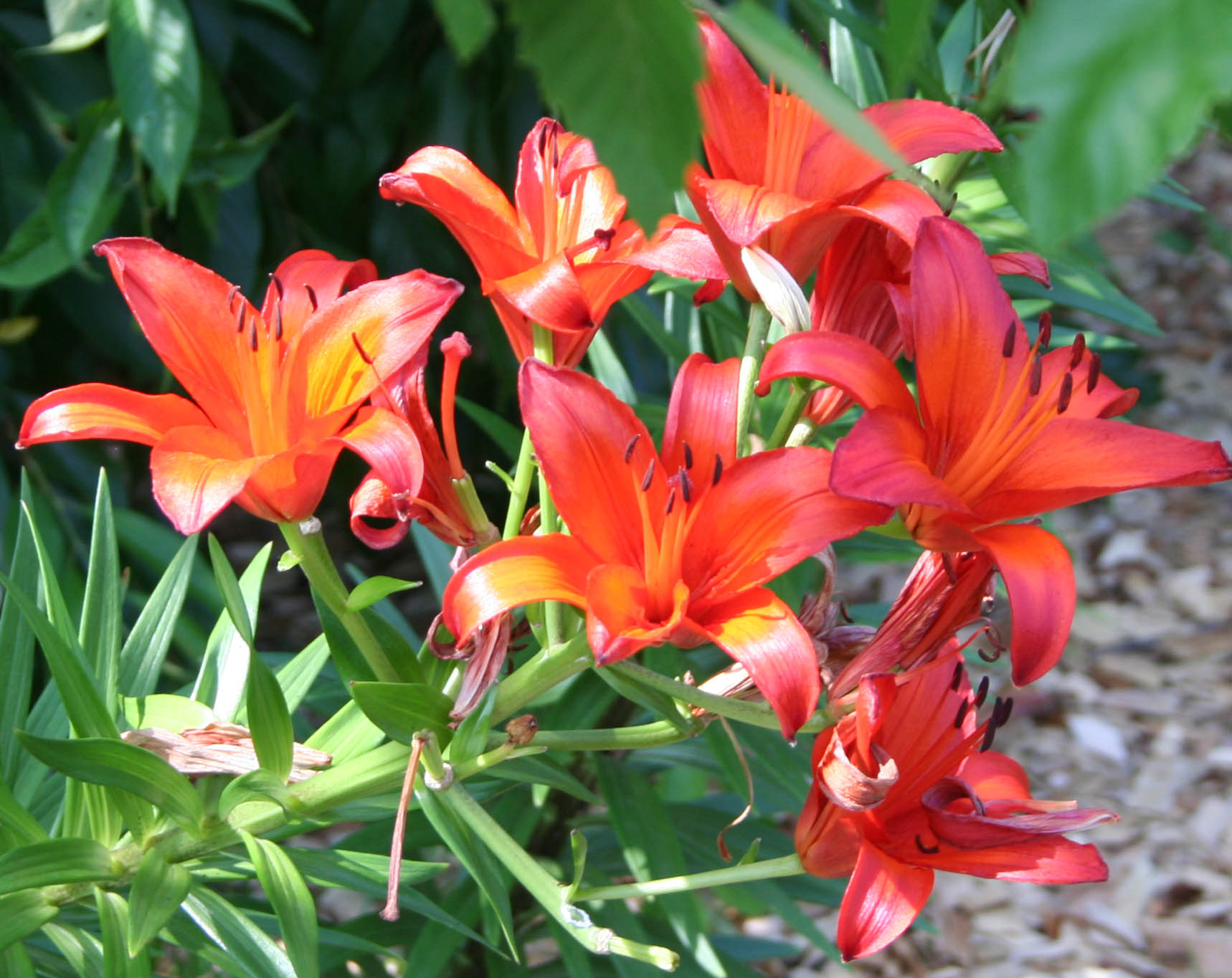|
 _______ _______
Owen Brown Interfaith Center - Native Gardens
More Pictures of Patio, Gazebo, Event Setups
The Owen Brown Interfaith Center is being Bayscaped. That means most plants around
the property are native to the area and are helping retain water so it soaks
into the water table instead of running into the storm sewers and then to Lake
Elkhorn. This runoff water collects toxic oils and nutrients, which are then
transported to the Chesapeake Bay where they contribute to algae bloom and fish
death. When water soaks into the ground, organisms in the soil remove toxins,
and the water is absorbed by plant and tree roots.
If you
look at the building, you will notice that drainage from the roofs flows into
garden areas. On the east, this water, as well as that from the ground around
the northeast corner of the property, enters a large “bioretention facility”
(also called a raingarden) which was engineered to absorb it and also to channel
any overflow into the storm water system. In the years since its construction,
little water has been sent to that overflow drain. The garden has been able to
absorb the runoff. By the west entrance, the garden in front of the landscape
timbers is also a raingarden, dug to absorb water from the porch roof.
The
plants in these beds are native to the Piedmont area of the Chesapeake Bay, and
were chosen because they evolved in this environment and grow well here without
much care. And, as these were grown in Maryland, they are more hardy here than
those of the same species from, say, Pennsylvania or North Carolina. Aside from
ease of care, however, they were planted here to preserve them. We are losing
our native species. Airports, housing developments, malls, and roads cover what
was once open land; those plants that survived the improvements were pulled as
weeds. In addition, aggressive invasive species are replacing the natives -
kudzu, daylily, Bradford pear, Japanese honeysuckle, vinca, butterfly bush,
multiflora rose, garlic mustard, lamium, ajuga, crown vetch and cut thumb are
just a few examples. Some were brought here intentionally and some were
accidental, but all are crowding out the plants that evolved in this environment
because they have no enemies to keep them in check. Consequently, as native
plants support native wildlife, we lose other species as well. When one group -
the plants in this case - is removed, the wildlife that depends on it cannot
survive. Many native songbirds and butterflies are disappearing because of the
loss of habitat and food here and in South America.
We
chose to grow native plants around the Interfaith Center to provide food and
shelter for the other native species here, and also to show visitors that these
plants are as attractive as cultivars and exotic imports. Take a walk around
the building and look at the gardens. Among the flowering perennials are purple
liatris, native geranium, and monarda; white native strawberry, Allegheny
stonecrop, foxglove beardtongue, Philadelphia fleabane, narrow leafed mountain
mint, rose mallow, and field chickweed; pink pasture rose; yellow coreopsis,
black eyed susan, sneezeweed, goldenrod, and senna; blue lobelia, blue eyed
grass, bottle gentian, creeping phlox, and hyssop skullcap; red cardinal flower;
orange trumpet vine, columbine, and butterfly milkweed; and golden orange
coneflower. Among the native shrubs and trees are silky dogwood, inkberry,
native hydrangia, red chokeberry, holly and river birch. Switchgrass,
bottlebrush grass, oatgrass, and Indian grass provide background and dried
winter interest. You will also see butterflies, caterpillars, birds and other
animals. The children in the daycare center enjoy them. We hope you will too.

|
